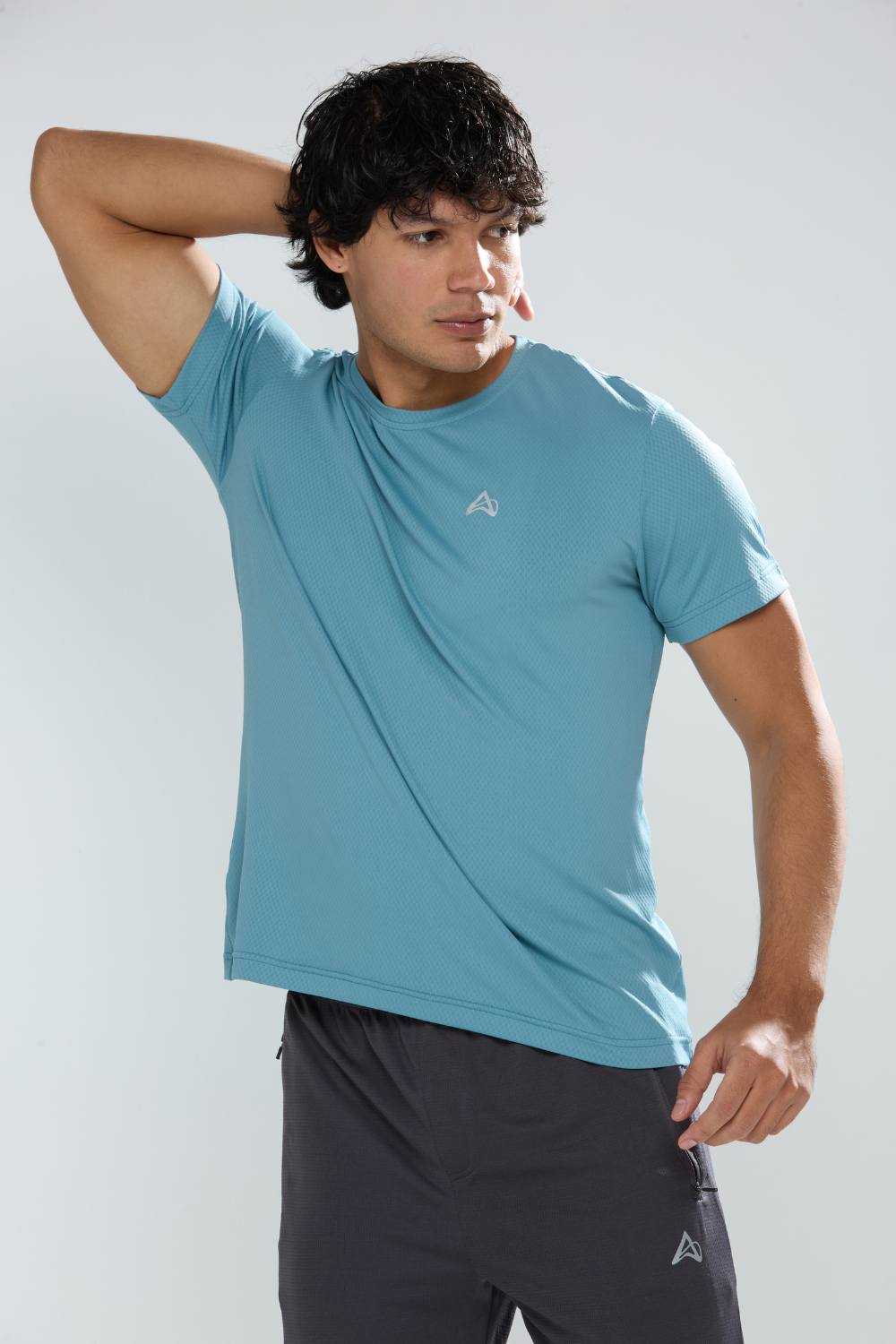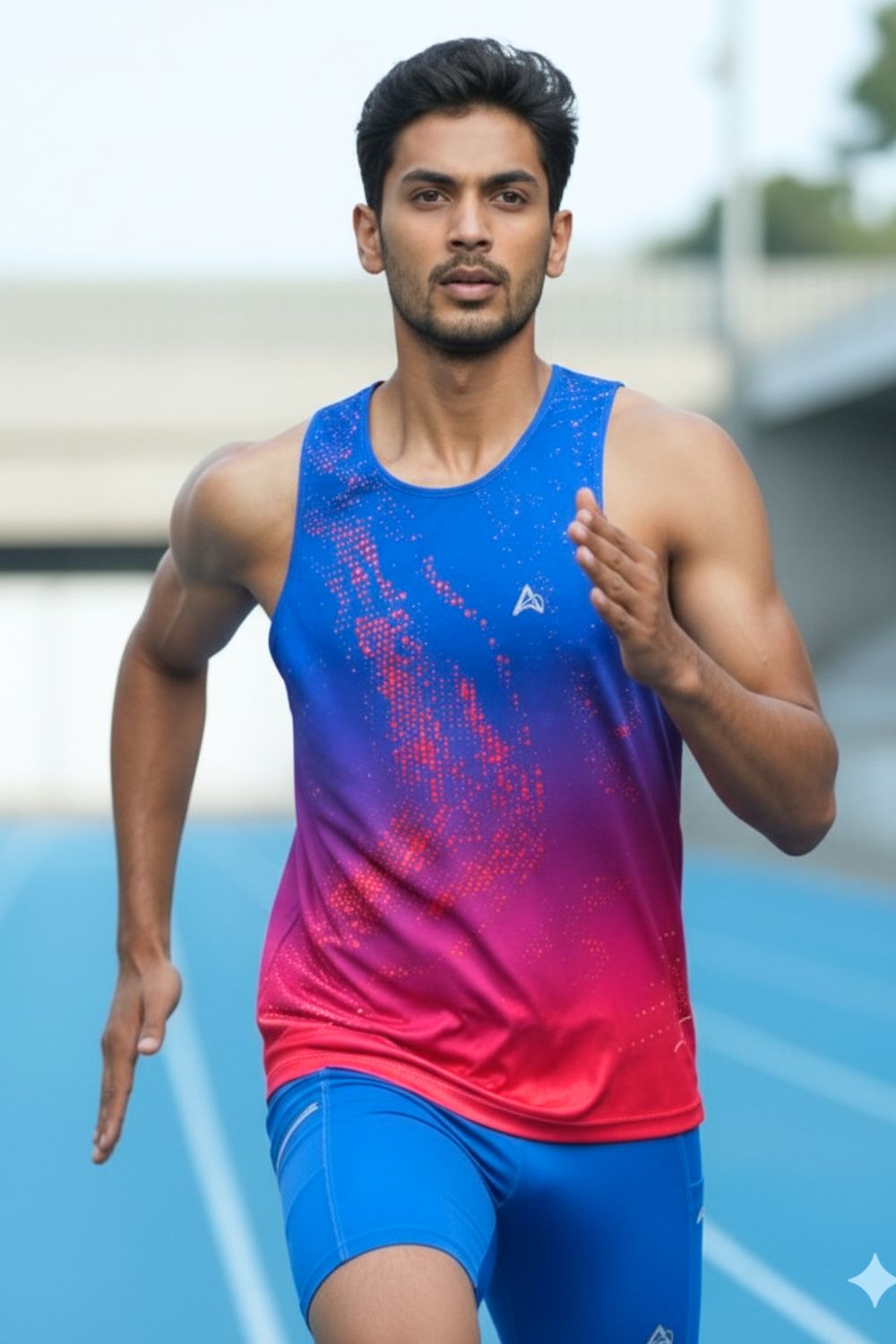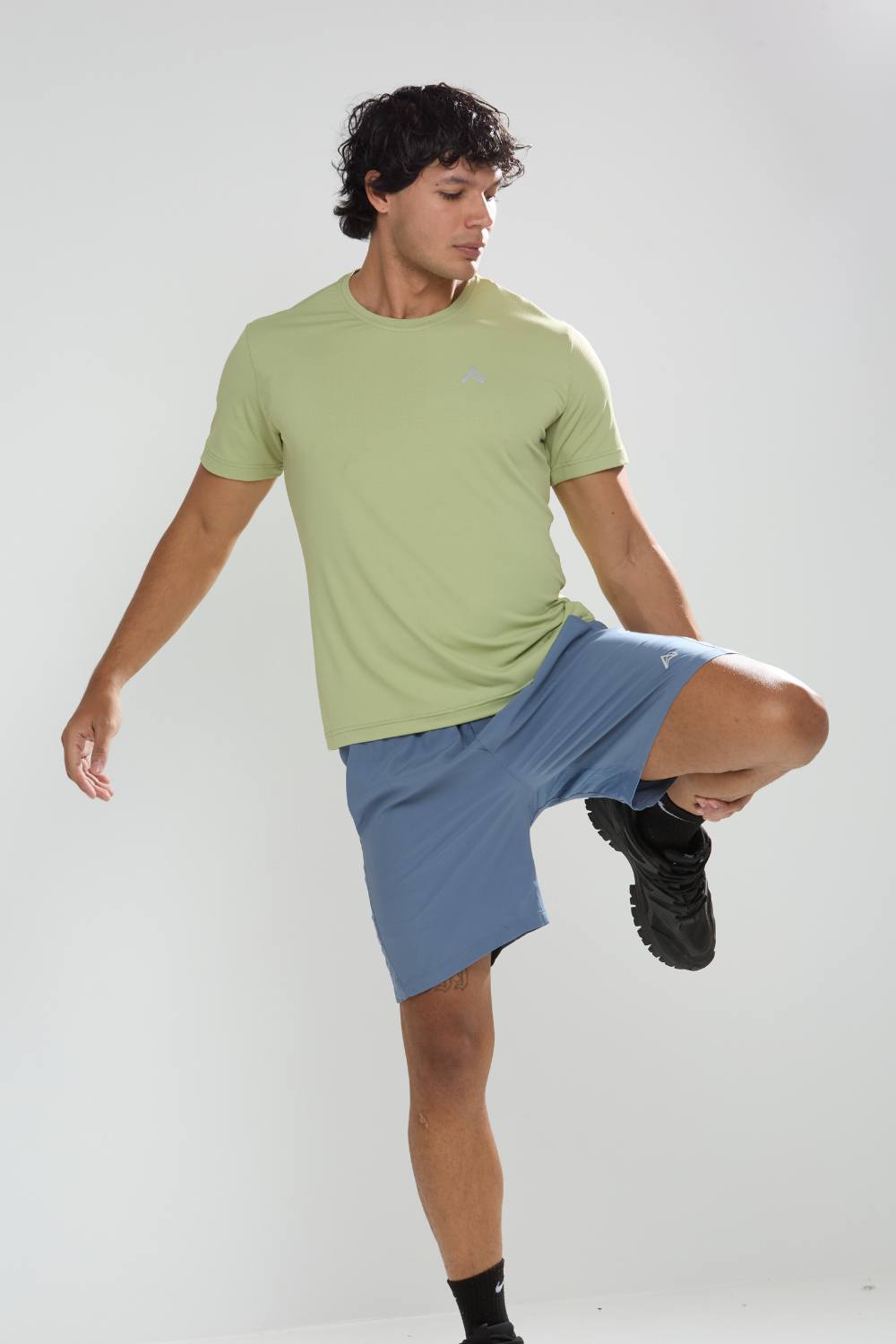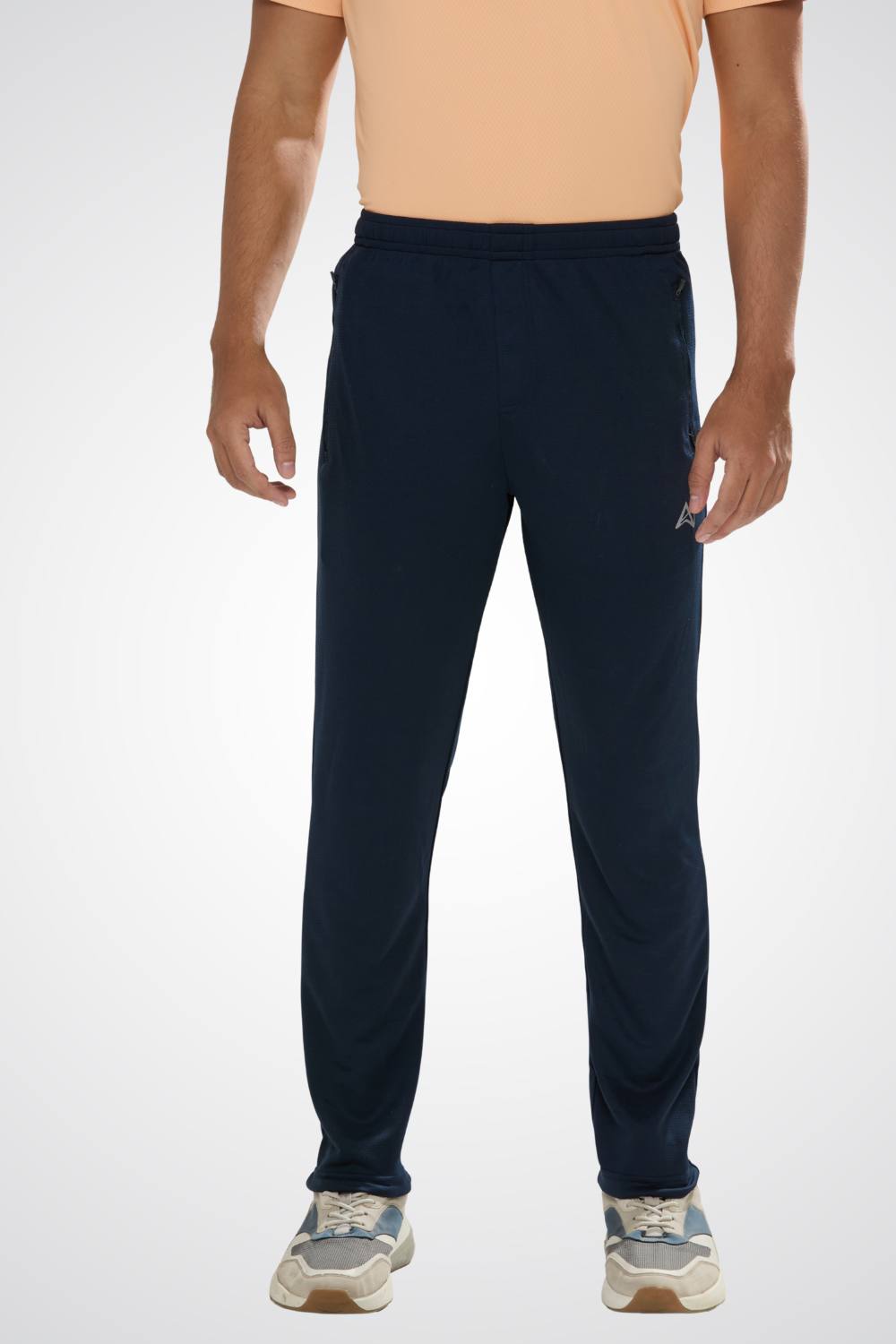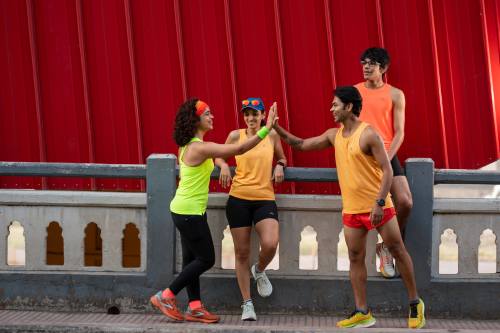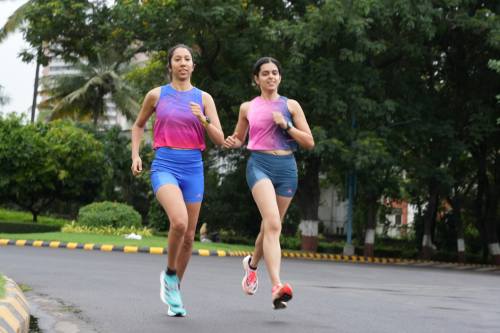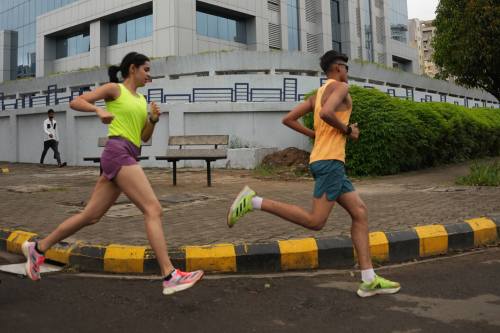Quick Listen:
Imagine the thud of your sneakers on a dew-kissed trail at dawn, your pulse syncing with the rhythm of your breath, and a subtle vibration on your wrist signaling not just distance covered, but the precise fuel your body craves right now. This is running in 2025 not mere endurance, but a symphony of data and determination. As wearable tech merges with innovative apparel, it's empowering athletes to shatter personal records while safeguarding their health, turning every stride into a calculated leap forward.
Running once boiled down to instinct: feel the burn, push through, recover on faith. Now, it's a precision science, courtesy of wearables that capture the nuances of human physiology in real time. GPS watches, optical heart rate sensors, and embedded fabric trackers are flooding the market, feeding algorithms that decode everything from stride efficiency to metabolic thresholds. For the activewear sector, this shift demands more than moisture-wicking fabrics it's about gear that communicates, adapts, and elevates. With adoption surging among casual joggers and Olympians alike, these tools promise not just better runs, but smarter bodies.
Tired of gear that slows you down? Chafing, soggy fabrics, and missing pockets kill your run's momentum. At Aguante, we're runners who get it. Our high-performance activewear features moisture-wicking fabrics, ergonomic designs, and smart storage to keep you focused. Shop Now!
The Rise of Wearable-Driven Performance
The momentum is undeniable. The global wearable technology market, valued at USD 84.2 billion in 2024, is projected to expand at a compound annual growth rate of 13.6% through 2030, driven largely by fitness and sports applications. For runners specifically, devices are evolving from basic step-counters to sophisticated labs on the wrist. Consider the latest in heart rate modeling: researchers, led by Barak Gahtan and colleagues, unveiled a groundbreaking framework in April 2025 titled From Lab to Wrist: Bridging Metabolic Monitoring, which marks the pioneering effort to forecast real-time oxygen consumption trajectories using only off-the-shelf smartwatch and chest-strap inputs. This dual-model system first refines heart rate predictions through a constrained ordinary differential equation paired with a neural Kalman filter, drawing from more than three million observations to deliver one-second forecasts with a mean absolute error of just 2.81 beats per minute and a robust correlation coefficient of 0.87. Building on that foundation, the second component calibrates oxygen uptake estimates from a mere initial second of data, yielding sequence-to-sequence projections with mean absolute percentage errors hovering around 13% all while adeptly mirroring swift physiological shifts and sustained efforts across varying paces. Such accuracy brings elite-level metabolic insights to everyday athletes, allowing them to gauge energy demands mid-stride without bulky lab gear.
Beyond vital signs, the ecosystem is broadening. Smart insoles like the Aero Run models measure foot strike forces and pronation patterns, while biometric shirts monitor muscle activation via embedded strain gauges. Apparel innovators are weaving in these sensors, creating garments that double as data hubs. Collaborations abound: Garmin's integration with Adidas running kits syncs pace alerts to shoe-embedded accelerometers, and Nike's Apple Watch tie-ins deliver haptic feedback for form corrections. AI platforms, such as those in the Strava ecosystem, sift through this deluge to prescribe workouts suggesting hill repeats if your VO2 max trends downward or recovery days when heart rate variability dips. It's transformative: what was once guesswork now yields marginal gains that compound into marathons under three hours.
Real-World Impact: From Elites to Amateurs
Elite athletes are at the vanguard, leveraging wearables to eke out those elusive edges. In professional marathon circuits, coaches pore over aggregated data from devices like the Pulse Track 360 headband, which tracks cerebral oxygenation alongside cardiac output, fine-tuning hydration strategies to shave seconds off splits. A study in the Journal of Sports Medicine underscores how such tech has revolutionized performance analysis, enabling real-time tweaks that boost endurance by up to 5% in high-stakes races. Picture a Boston qualifier adjusting tempo based on live VO2 feedback, ensuring aerobic efficiency peaks exactly when needed.
Amateurs aren't sidelined. Long-distance enthusiasts, armed with consumer trackers, report enhanced form and stamina, with analytics flagging inefficiencies like overstriding before they cascade into shin splints. Community groups worldwide echo this: participants in urban run clubs have slashed injury incidences by 20-30% through proactive metric monitoring, reallocating energy from rehab to progression. Apparel plays a pivotal role here compression tights from brands like Under Armour, laced with conductive yarns, relay torque data to apps, guiding users toward balanced gait. These integrations foster ecosystems where footwear dialogues with wearables, and apps orchestrate the narrative, rendering each outing a iterative masterclass in biomechanics.
The Challenges of a Data-Driven Run
Yet, for all its allure, this tech frontier bristles with pitfalls. Foremost is accuracy: wrist-based optical sensors can falter during high-intensity sprints, inflating heart rate readings by 5-10% due to motion artifacts, a discrepancy that cascades into flawed VO2 estimates. Calibration drifts and inter-device variances compound the issue, demanding cross-validation that frustrates casual users. Privacy looms larger still health logs, ripe for breaches, expose runners to identity theft or insurer scrutiny, with surveys revealing 40% of owners fretting over data commodification. Ethical lapses, from biased algorithms favoring certain demographics to unchecked surveillance by apps, underscore the need for robust regulations.
Overdependence is insidious too; metrics can eclipse bodily cues, breeding burnout among data obsessives who ignore fatigue signals in pursuit of optimized splits. Then there's the ledger: premium setups, blending sensor-rich shorts with advanced watches, often exceed $500, pricing out budget-conscious enthusiasts despite trickle-down affordability. Battery longevity and washability further vex, as sweat-soaked circuits falter. Addressing these through standardized protocols and equitable access will determine if wearables uplift or alienate.
Opportunities for Brands and Runners
The wearable surge is a boon for activewear titans, who are pivoting toward hybrid realms. Bundles pairing AI-infused leggings with analytics subscriptions are proliferating, fostering loyalty via tailored nudges like recommending orthotic inserts based on gait anomalies. Revenue diversification beckons: predictive services, forecasting overtraining risks with 85% precision, could command monthly fees, while cross-promotions with device makers amplify reach. Brands excelling in this fusion merging aesthetics with telemetry command premiums, as consumers crave gear that doesn't just look sharp but performs surgically.
For runners, the payoff is profound: democratized expertise, where novices rival pros in insight. As the sports wearables market climbs from $45.18 billion in 2025 to $96.70 billion by 2034, expect innovations like haptic vests that vibrate for cadence cues, cementing tech as an indispensable ally.
The Future: Smarter Fabrics, Smarter Runs
Visionaries forecast an era where apparel thinks. By decade's end, smart textiles infused with AI and nanotechnology will autonomously adjust compression for optimal circulation or harvest kinetic energy to power sensors, all while remaining machine-washable. MIT's recent fiber computers, embeddable in yarns, herald clothing that runs apps to decode wearer intent, from posture tweaks to hydration alerts. The From Lab to Wrist paradigm exemplifies this trajectory, democratizing lab-caliber VO2 modeling and paving for hyper-personalized regimens that preempt ailments.
AI's alchemy will refine further: garments scanning 3D biometrics for bespoke fits, or fabrics predicting fatigue via embedded biosensors. As the smart fabrics market surges toward $86.87 billion by 2034, running gear will evolve from passive to proactive, blending seamlessly with daily life. The verdict is clear: in this data-infused dawn, excellence demands adaptation.
Co-Pilots of Performance
Running endures as poetry in motion the wind-whipped trails, the euphoric burn yet infuses it with prose of precision. Wearables and apparel aren't mere accessories; they're co-pilots charting untrodden potentials. For brands, inertia invites obsolescence; for runners, embrace signals the dawn of unparalleled prowess. Lace up, sync in, and let the metrics propel you toward horizons once unimaginable.
Frequently Asked Questions
How accurate are smartwatches for tracking running performance and heart rate?
Modern smartwatches have significantly improved accuracy, with recent research showing heart rate predictions can achieve a mean absolute error of just 2.81 beats per minute and correlation coefficients of 0.87. However, wrist-based optical sensors can still falter during high-intensity sprints, potentially inflating heart rate readings by 5-10% due to motion artifacts. For the most accurate data, many runners combine smartwatches with chest-strap heart rate monitors.
What are the benefits of using wearable technology for running training?
Wearable technology transforms running from guesswork into precision science by providing real-time insights into heart rate, VO2 max, stride efficiency, and metabolic thresholds. Studies show these devices can boost endurance performance by up to 5% in competitive races, while amateur runners report 20-30% fewer injuries through proactive metric monitoring. The technology enables personalized training plans, form corrections, and optimal pacing strategies that were previously only available to elite athletes.
Are smart running clothes and wearables worth the investment for casual runners?
While premium wearable setups can exceed $500, the investment often pays off through injury prevention and performance improvements. Casual runners using consumer-grade trackers report enhanced form, better stamina, and fewer overuse injuries like shin splints. As the sports wearables market grows from $45.18 billion in 2025 to $96.70 billion by 2034, more affordable options are becoming available, making the technology accessible to budget-conscious enthusiasts who want to optimize their running experience.
Disclaimer: The above helpful resources content contains personal opinions and experiences. The information provided is for general knowledge and does not constitute professional advice.
You may also be interested in: How Ergonomic Fit Improves Running Performance: A Deep Dive
Tired of gear that slows you down? Chafing, soggy fabrics, and missing pockets kill your run's momentum. At Aguante, we're runners who get it. Our high-performance activewear features moisture-wicking fabrics, ergonomic designs, and smart storage to keep you focused. Shop Now!
Powered by flareAI.co





